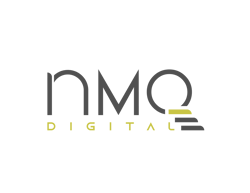In the ever-evolving landscape of cloud computing, two terms frequently emerge, sparking curiosity and sometimes confusion: Software as a Service (SaaS) and Platform as a Service (PaaS).
These Cloud Service Models, though sharing similarities, serve distinct purposes in the digital ecosystem. In this blog, we will focus on:
- What is SaaS (Software as a Service)?
- What is Paas (Platform as a Service)?
- What are the key differences Between SaaS and PaaS?
1: What is SaaS (Software as a Service)?
The User-Focused Model that Simplifies Software Access
SaaS means delivering software over the internet, allowing users to access and utilize applications without the hassle of installation or maintenance.
This model has transformed how businesses and individuals use software, shifting from traditional methods of purchasing and installing applications to a more flexible, subscription-based approach.
Applications are hosted remotely on a provider's servers and made available to customers over the Internet.
This model contrasts with traditional software delivery, where a user would need to install and manage the software on their own computer or local server.
Characteristics of SaaS
- Accessibility: SaaS software is accessible from anywhere with an internet connection, offering unparalleled convenience. This is a major advantage for users who are mobile or have multiple work locations.
Typically, SaaS applications are accessible via web browsers, making them platform-independent and usable on a variety of devices, including desktops, laptops, tablets, and smartphones. - Cost-Effectiveness: Instead of purchasing software outright, SaaS typically operates on a subscription basis, with users paying a regular fee (monthly or annually). This can lower the upfront costs for users.
- Scalability: SaaS solutions are generally scalable, offering various subscription levels depending on the number of users or the level of service required.
Users can easily scale their usage based on their needs, often through a subscription model. - Updates and Maintenance: The SaaS provider is responsible for maintaining the software, including bug fixes and software updates. This reduces the burden on the user’s IT staff.
Users automatically receive updates and new features as they are released, ensuring they always have the latest version of the software.
The SaaS provider manages updates and maintenance, ensuring users always have access to the latest features and security enhancements. - Security and Compliance: SaaS providers generally invest heavily in security measures, including data encryption and secure data centers, to protect their customers' data.
Compliance with various regulations (like GDPR, HIPAA, etc.) is often managed by the SaaS provider, reducing the compliance burden on the user. - Customization and Integration: Many SaaS applications offer a level of customization to tailor the software to specific business needs.
Integration with other services and applications is a common feature, allowing users to create a seamless workflow across different tools. - Data Storage: Data is stored in the cloud, typically in data centers provided by the SaaS vendor. This can offer high levels of data redundancy and backup options.
Examples of SaaS Providers
- Amazon Web Services (AWS): Offers a broad set of cloud-based services including computing power, storage options, and networking capabilities. AWS is known for its scalability, flexibility, and a wide array of tools that cater to different IT needs and business solutions.
- Microsoft Azure: Provides a suite of cloud services including computing, analytics, storage, and networking. Azure is known for its integration with Microsoft's software products and supports various programming languages, frameworks, and tools.
- Google Cloud: Offers services in computing, data storage, data analytics, and machine learning. It is appreciated for its robust machine learning and data analytics capabilities, as well as strong integration with Google's suite of products.
- Adobe Creative Cloud: A suite of software for graphic design, video editing, web development, photography, and more. Adobe Creative Cloud is known for industry-standard tools like Photoshop, Illustrator, and Premiere Pro, offering cloud-based storage and collaboration features.
- Salesforce: A leading CRM platform offering a suite of tools for sales, marketing, customer service, and more. Salesforce is known for its customizable CRM solutions, extensive app marketplace, and robust integration capabilities.
- Hubspot: Provides a CRM platform with tools for marketing, sales, content management, and customer service. Hubspot is popular for its inbound marketing tools, ease of use, and integration with other business applications.
- Oracle: Offers cloud-based ERP solutions, database services, and a comprehensive suite of enterprise applications. Oracle is known for its strong database management systems and enterprise software products, with a focus on scalability and reliability.
- SurveyMonkey: A tool for creating online surveys and polls. It's popular for its ease of use in creating and distributing surveys, analyzing responses, and deriving insights, useful in market research, customer satisfaction, and employee engagement.
- Mailchimp: Specializes in email marketing services, offering tools to create, send, and track email campaigns. It's known for its user-friendly interface, customizable templates, and analytics features.
- Shopify: A platform for creating and managing online stores. Shopify is known for its ease of setting up an online store, a wide range of customizable templates, integrated payment solutions, and tools for inventory management and marketing.
2: What is PaaS (Platform as a Service)?
The Developer-Centric Model that Empowers Developers
Platform as a Service (PaaS) is a cloud computing model that provides customers with a platform that allows them to develop, run, and manage applications without the complexity of building and maintaining the infrastructure typically associated with developing and launching an app.
PaaS provides a platform on the cloud with tools to develop, test, deploy, and manage software applications.
The PaaS provider manages the underlying infrastructure (servers, storage, networking) and handles the complexities of operating systems and software updates.
Characteristics of PaaS
- Development Tools: PaaS offers a suite of development tools and environments to build and test applications.
Integrated development environments, libraries, frameworks, and other tools necessary for software development. - Hosting Capabilities: It provides the necessary infrastructure to host and run applications.
PaaS provides the capability to host applications, ensuring they are available to users with the needed scalability and performance. - Scalable Environment: PaaS environments can be scaled to meet the changing demands of applications.
- Middleware and Database Management: PaaS includes management of middleware, databases, and other essential components.
Database management systems are typically part of PaaS, allowing developers to create, manage, and manipulate databases without needing to handle the underlying storage systems.
Key Features
- Scalability: Easily scales the resources up or down based on application demand.
- Multi-tenancy: Multiple customers can use the same development application, with each customer's data and configuration remaining separate and secure.
- Automated Updates: Regular updates of all underlying software, including security patches and new features.
- Collaboration Tools: Facilitates collaboration among development teams, often integrating with version control systems and other collaboration tools.
Advantages
- Reduced Complexity: Simplifies the development process by removing the need to manage infrastructure.
- Cost-Effective: Reduces upfront costs, as there is no need to invest in hardware or software licenses.
- Faster Development and Deployment: Enables quicker development and deployment of applications.
- Focus on Development: Allows developers to focus on writing code and business logic, instead of managing infrastructure.
Use Cases
- Web Application Development: Ideal for developing, testing, and deploying web applications.
- API Development and Management: Useful for creating and managing APIs.
- Real-Time Analytics and Processing: Provides a platform for applications that require real-time data processing and analytics.
Examples of PaaS Providers
- Google App Engine: Part of the Google Cloud Platform, Google App Engine is designed to support applications written in a variety of programming languages. It's highly scalable and integrates well with other Google Cloud services.
Automatic scaling, versioning, built-in services for data storage, caching, and job scheduling. Strong for applications leveraging other Google services like Google Maps, Firebase, or machine learning APIs. - AWS Elastic Beanstalk: Amazon's offering for deploying and scaling web applications and services. It supports popular languages and frameworks and integrates deeply with AWS’s ecosystem.
Easy deployment, automatic scaling, load balancing, and application health monitoring. Good for users already invested in the AWS ecosystem. - Microsoft Azure App Service: A part of Microsoft Azure, it focuses on enabling developers to quickly build, deploy, and scale web applications. It supports multiple programming languages and integrates with other Azure services.
Built-in development operations, global scaling, and integration with Microsoft’s ecosystem, including Visual Studio and SQL Database. - Heroku: A cloud platform as a service supporting several programming languages. Heroku is known for its ease of use and developer-friendly approach.
Simple to deploy and manage applications, supports a range of languages and frameworks, and offers add-ons for database services, caching, monitoring, etc. Ideal for startups and small to medium-sized applications. - DigitalOcean App Platform: Focuses on simplicity and ease of use for developers, particularly those in smaller organizations or individual developers. Known for its straightforward pricing and simplicity.
Supports numerous languages and frameworks, is easy to scale, and integrates with DigitalOcean’s cloud infrastructure. It offers a balance between ease of use and access to underlying cloud resources
3: What are the key differences between SaaS and PaaS?
The difference between Software as a Service (SaaS) and Platform as a Service (PaaS) lies primarily in their intended audience and their scope of service.
Both are cloud-based models, but they serve different needs in the software development and deployment lifecycle.
Software as a Service (SaaS)
- Target Audience: End-users.
- Purpose: SaaS provides software applications over the Internet as a service. Users access these applications typically through a web browser.
- Management: The SaaS provider manages everything - the infrastructure, the platforms, and the application itself.
- Examples: Google Workspace (formerly G Suite), Salesforce, Dropbox, Microsoft Office 365, and Adobe Creative Cloud.
- Use Case: Meant for customers who want ready-to-use software without worrying about installation, maintenance, or underlying infrastructure.
- Customization and Control: Generally, SaaS offers limited customization. Users can't control the infrastructure or platform but can usually configure the application to some extent.
- Pricing Model: Often subscription-based, with fees based on usage metrics like the number of users.
Platform as a Service (PaaS)
- Target Audience: Developers and Development Teams.
- Purpose: PaaS provides a cloud-based platform allowing developers to build, deploy, and scale applications. It includes infrastructure but also middleware, development tools, database management systems, etc.
- Management: The PaaS provider manages the infrastructure (servers, storage, networking) and platforms (runtime, middleware, OS), but users manage the applications.
- Examples: Google App Engine, Microsoft Azure App Service, AWS Elastic Beanstalk, Heroku.
- Use Case: Used by developers who want to create applications without the hassle of managing servers, storage, network, and operating systems.
- Customization and Control: Offers more control to the user than SaaS in terms of application design and development. Users can control how the app works and looks, but not the underlying infrastructure.
- Pricing Model: Typically, usage-based pricing depends on the resources consumed by the platform, like computing power, storage, and network bandwidth.
Key Differences
- Control Level: SaaS offers software products for end-users with no control over the infrastructure or platform. PaaS provides a platform for developers with control over applications and some degree of configuration, but not over the infrastructure.
- Purpose: SaaS delivers fully functional software to end-users. PaaS offers an environment for developers to build, deploy, and manage their own applications.
- Intended User: SaaS is for anyone who needs to use software applications. PaaS is for developers and IT professionals who are developing software applications.
- Customization: SaaS offers limited customization options, while PaaS allows users to create bespoke applications.
In conclusion, while SaaS and PaaS share the common trait of being cloud-based services, they cater to different needs and audiences.
SaaS simplifies software usage for end-users, whereas PaaS provides a robust platform for developers to create and manage applications.
Understanding these differences can help businesses and individuals make informed decisions about which service best meets their specific requirements.
If you would like to know more about cloud services, you can check out our Digital Experience and Development Services at NMQ Digital.






